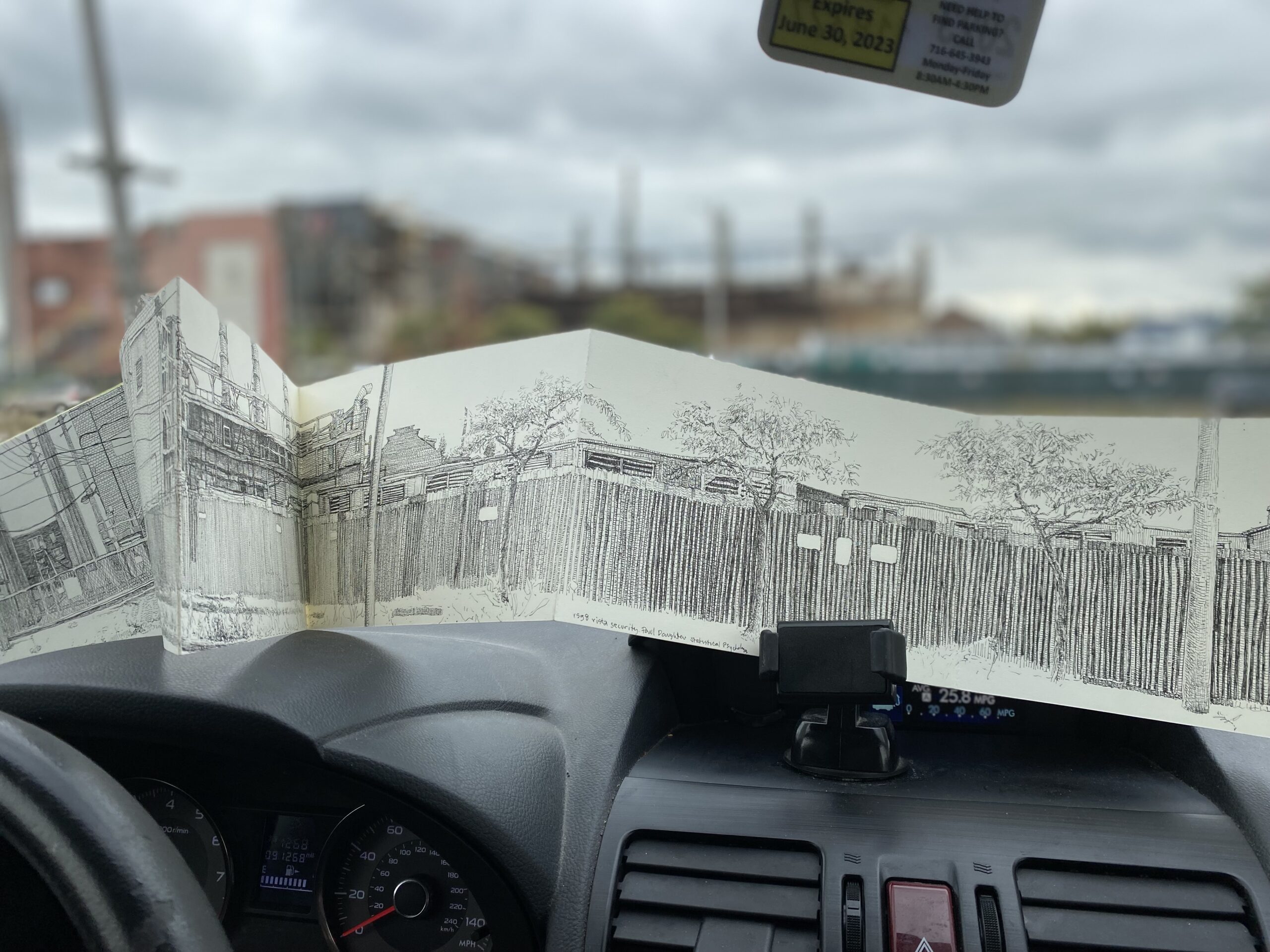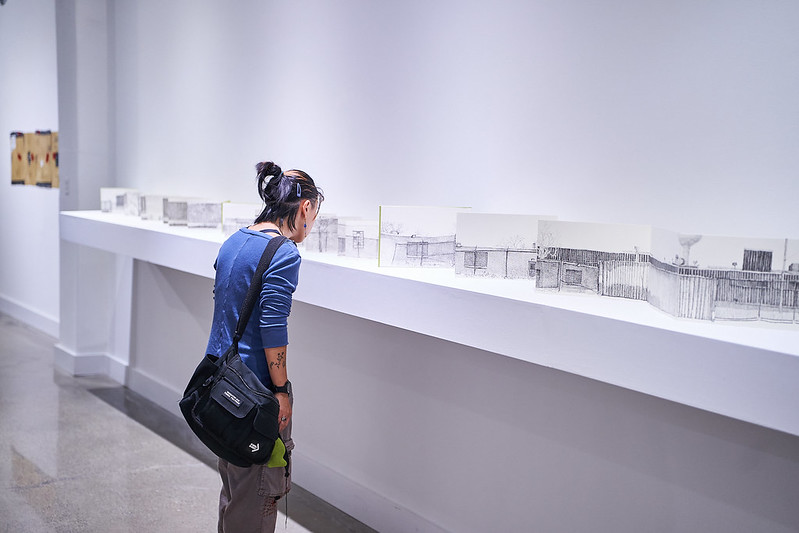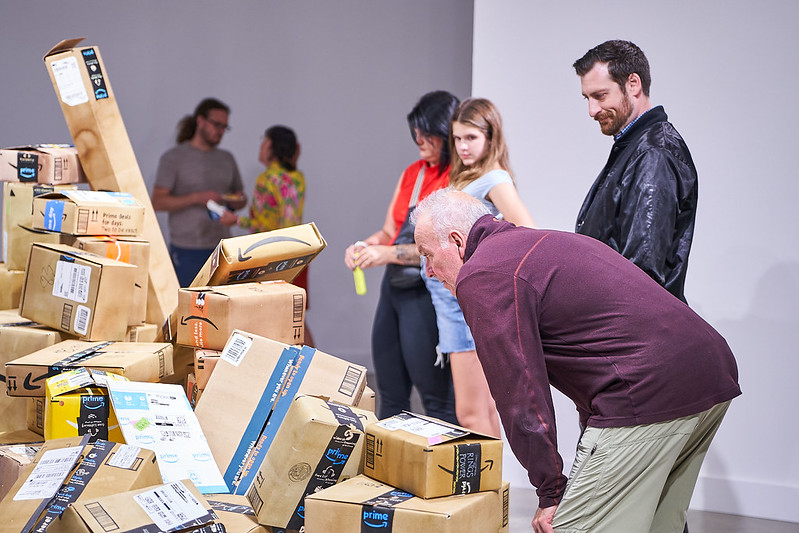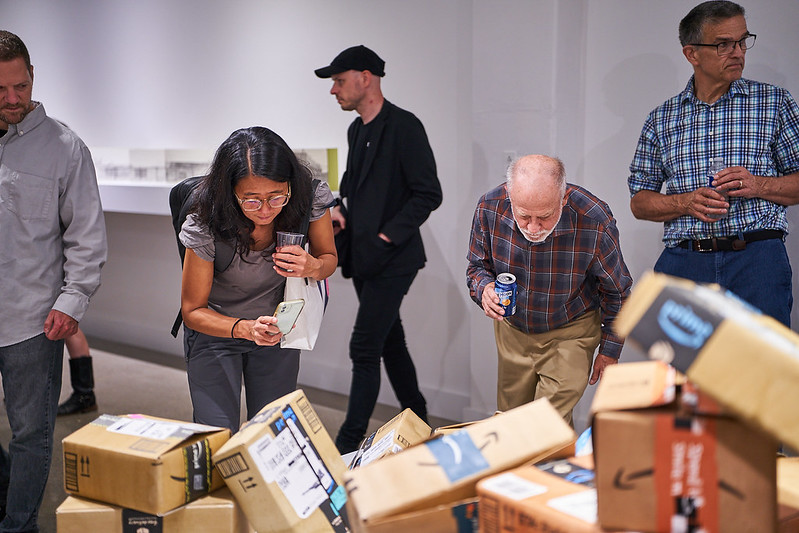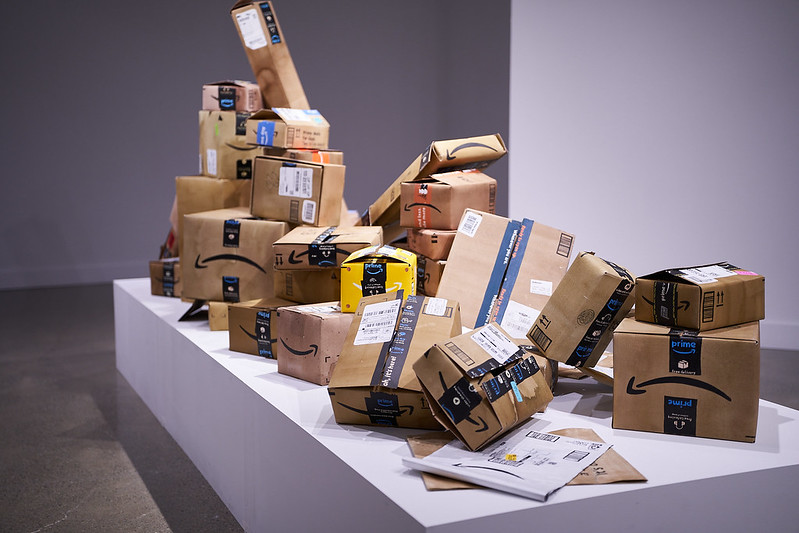Date/Time
Date(s) - 09/27/2024 - 11/09/2024
12:00 am
Location
Buffalo Arts Studio
Categories
Opening Reception, Friday, September 27, 2024, 5:00—8:00 pm
Part of M&T Bank 4th Friday @ Tri-Main Center
Notable
Curatorial Essay by Shirley Verrico
We may imagine the digital cloud as placeless; mute, ethereal, and unmediated. Yet the reality of the cloud is embodied in thousands of massive data centers, any one of which can use as much electricity as a mid-sized town. Behind that cloud-shaped icon on our screens is a whole universe of technologies and cultural norms, all working to keep us from noticing their existence.
– Tung Hui Hi, 2015, A Prehistory of the Cloud
Joan Linder largely draws from observation, using drawing to examine the hidden-in-plain-sight landscape of e-commerce, cloud computing, and crypto-mining technology systems. Linder finds herself both horrified and fascinated by the dematerialized digital systems of transaction and communication. For the exhibition Fulfillment, Linder focuses her eyes on the environmental and resource-heavy costs associated with our digital behaviors.
For over two years, Linder visited Western New York e-commerce sites in Buffalo and Niagara Falls, drawing the facilities as well as the empty lots, community churches, public housing, and deteriorating homes across the street. Digihost, American Axle, East Delavan, Buffalo is a three-book set of drawings, each 144 inches long. The first depicts the former American Axle plant, which now houses a variety of businesses including crypto-mining. The second book, Joseph Kelly Gardens, details the municipal housing project that sits across the street—in earshot of the constant drone from the crypto servers. The third book, Digihost, shows the cryptocurrency operations housed in Buffalo’s former American Axle factory since 2021. Digihost is a blockchain technology company mining bitcoin and the American Axle facility was Digihost’s first operational mining facility. Mining cryptocurrency requires solving complex mathematical problems on the blockchain. Cryptocurrency miners contribute their computing power to solve these puzzles and receive cryptocurrency coins for validating the blockchain process. Because the equations constantly become more challenging, the computational performance—and by extension the power needed to validate the process—continually scales upward. Digihost also operates a second facility in North Tonawanda, at the former Fortistar gas plant, where residents have organized to bring formal complaints about the noise pollution caused by the mining to the local government.
Linder uses the video, also titled Fulfillment, to further focus the viewer on the literal landscape of e-commerce. Like the accordion books, the camera locks onto each scene for several moments before moving to the next site. Fulfillment presents the viewer with an orderly row of delivery trucks, a well-manicured fence line, and the rhythmic facade of the Delavan factory, all glowing under a bright blue winter sky. According to www.energystar.gov, buildings used to house cryptocurrency mining can create a massive strain on local electricity grids, with a single crypto transaction consuming more energy than that required to power six houses a day in the U.S. The estimated global annual energy consumption of the current cryptocurrency market is equivalent to more than 19 coal-fired power plants operating continuously. This level of energy consumption is hidden within the factory walls, only visible through the massive spinning fans used to cool servers inside.
Along with the drawings, Fulfillment includes an installation of handmade paper facsimiles of discarded Amazon shipping boxes. Although Amazon is a corporation of things being moved by people to places, it too has developed technologies and cultural norms that keep us—the consumers—from noticing this reality. These reconstructed relics of e-commerce carefully recreate the markings that chart the history of the box through the supply chain, from the fulfillment center to the retail consumer. Not only do the boxes acknowledge this journey, but Linder’s attention to every detail makes us see them as well.
For Linder, who has lived in Buffalo for 20 years, Fulfillment connects the personal to the political, the regional to the global. In this region, the strong economy of the 1900s, formed by new technologies of wartime industry, left a toxic legacy behind including Love Canal. Twentieth-century economic decline led to decaying industrial architecture; twenty-first-century investments in new technology include cloud computing and crypto server farms retrofitted in defunct factories. Like their predecessors, these “new” sites, and their resulting pollution, are strategically placed in distressed neighborhoods where they are most likely to go unnoticed.
Biography
Joan Linder’s artwork has been exhibited internationally in group exhibitions and in over 25 solo exhibitions, including at the Buffalo AKG Art Museum, The Faulconer Gallery, Grinnell College, IA, the University of Michigan’s Institute for the Humanities, and the Mixed Greens Gallery. She has been awarded residency fellowships at Yaddo, MacDowell, Villa Montalvo, Smack Mellon Studios, and Lower East Side Printshop. Linder was a recipient of the Pollock-Krasner Foundation and the 2024 NYSCA Support for Artists grants. Linder’s work has been written about in publications that include Hyperallergic, Art in America Magazine, and The New York Times. She recently co-curated Hot Spots: Radioactivity in the Landscape, at the University at Buffalo Art Galleries and the University of Illinois Urbana-Champaign’s Krannert Art Museum.
Part of Waterfront View Series, which is funded in part by the National Endowment for the Arts.
Photos by Nilson Rivera Photography.

